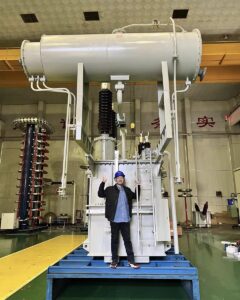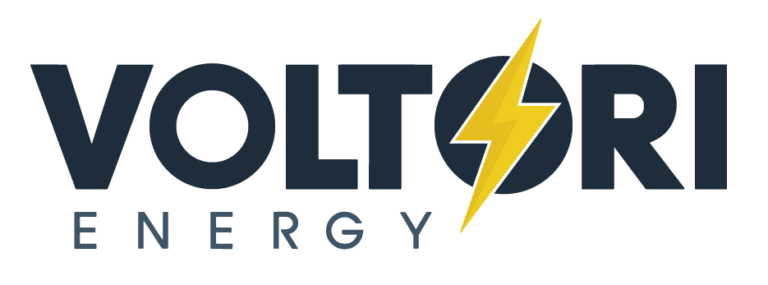Every renewable energy project manager in Canada faces a crucial decision: choosing between domestic or imported transformers. Delays, compliance issues, and performance problems can devastate project timelines and budgets. Is "buying Canadian" the answer?
Choosing between Canadian-made and imported transformers depends primarily on individual project requirements rather than country of origin. While Canadian transformers offer advantages in regulatory compliance and faster lead times, imported units may provide cost benefits or specialized features. The best decision weighs performance specs, service infrastructure, and total value rather than manufacturing location.

I've spent years overseeing supply chains in the transformer industry, and I've learned that the "Canadian vs. imported" debate misses the point. What matters is finding the right transformer for your specific application, supported by reliable service infrastructure. Let me share what I've discovered through managing procurement for countless renewable energy projects across Canada.
Who manufactures transformers in Canada?
Many project developers aren't aware of Canada's robust transformer manufacturing ecosystem. When deadlines tighten and budgets shrink, knowing your options becomes essential. Are you missing out on ideal local partners?
Canada hosts several specialized transformer manufacturers including Hammond Power Solutions, Northern Transformer, Transformateurs Pioneer, Rex Power Magnetics, and VanTran Industries with Canadian operations. These companies offer varying specializations from renewable energy applications to utility-scale products, with manufacturing facilities primarily in Ontario, Quebec, and Alberta.

Throughout my career in supply chain management, I've built relationships with transformer manufacturers across Canada. What fascinates me is how each has developed specific expertise. Hammond Power Solutions, for instance, has significant capacity for distribution transformers, while Northern Transformer excels in custom power solutions for renewable applications.
The Specialization Landscape
At Voltori, I've implemented a strategic sourcing matrix that maps manufacturers' capabilities against specific project requirements. Here's what I've observed:
| Manufacturer | Specialization | Geographic Strength | Typical Lead Times |
|---|---|---|---|
| Hammond Power | Distribution transformers | National presence | 8-12 weeks |
| Northern Transformer | Custom renewable solutions | Ontario/Quebec focus | 10-14 weeks |
| Transformateurs Pioneer | Utility-grade equipment | Quebec/Eastern Canada | 12-16 weeks |
| Rex Power Magnetics | Specialty applications | National distribution | 6-10 weeks |
I've personally toured manufacturing facilities across Ontario, Quebec, and Alberta, and can confirm that Canadian manufacturers have invested substantially in automated production technology and quality testing equipment. This has significantly improved their competitiveness compared to a decade ago when imports dominated certain segments.
However, I firmly believe in evaluating each manufacturer on performance rather than location. We've implemented a supplier qualification process that focuses on technical capabilities, quality systems, and service infrastructure rather than country of origin. This approach has served our customers far better than any blanket preference for domestic manufacturing.
Are plugs in Canada the same as US?
When integrating renewable energy systems, compatibility questions always arise. With Canada's close proximity to the US, many assume electrical standards are identical. Could this misconception be creating hidden risks in your projects?
While consumer electrical plugs are largely identical between Canada and the US (both using NEMA standards), industrial transformer connections and regulatory requirements differ significantly. Canadian transformers must meet CSA standards which sometimes diverge from US UL requirements, particularly in areas of grounding specifications, weather resistance ratings, and safety certifications.

The superficial similarity between Canadian and US electrical systems masks important differences that impact industrial transformer applications. From my perspective managing complex supply chains, these differences create both challenges and opportunities in procurement planning.
Beyond Surface Similarities
Canadian electrical standards blend elements from both US and European systems, creating a unique regulatory landscape. For industrial applications like transformer installations in renewable energy projects, this creates several practical considerations:
-
Certification Requirements: All transformers installed in Canada must carry CSA certification or an equivalent recognized by provincial authorities. UL certification alone is insufficient, despite being acceptable in the US.
-
Climate Specifications: Canadian standards place greater emphasis on extreme weather performance, particularly cold weather operation. Our transformers must function reliably from -40°C in Alberta winters to coastal salt exposure in BC.
-
Technical Variations: While voltage standards (600V vs 480V for three-phase systems) are well known, there are subtler differences in grounding requirements, harmonics management, and protection coordination that impact transformer design.
I've found these regulatory nuances create a competitive advantage for our supply chain strategy. We've developed expertise in navigating these requirements that many US-based competitors struggle with when entering the Canadian market. However, this doesn't automatically make Canadian-manufactured products superior – many international suppliers have successfully adapted their designs to meet Canadian standards.
What matters most when selecting transformers?
In my years overseeing transformer procurement, I've developed a practical philosophy: let the equipment and service speak for themselves. Are you focusing on the wrong criteria when selecting transformers for your renewable projects?
When selecting transformers, prioritize performance specifications, service infrastructure, and total cost of ownership rather than country of origin. Evaluate technical parameters (efficiency, reliability, load handling), after-sales support capability, warranty terms, parts availability, and long-term value instead of manufacturing location labels.

As Supply Chain Director at Voltori, I've implemented a supplier evaluation framework that deliberately removes country-of-origin bias. We let transformers speak for themselves through rigorous testing and field performance data.
The Performance-First Approach
I believe in choosing what works best regardless of origin. Whether a transformer is made in USA, Canada, or China is far less important than these critical factors:
| Selection Factor | What to Evaluate | Why It Matters |
|---|---|---|
| Technical Performance | Efficiency ratings, temperature rise, impedance | Directly impacts operating costs and system compatibility |
| Reliability Track Record | Field failure rates, design maturity | Prevents costly downtime and replacement |
| Service Infrastructure | Local support team, spare parts availability | Ensures quick resolution when issues arise |
| Total Cost of Ownership | Initial price plus operational costs | More meaningful than purchase price alone |
| Delivery Timeline | Manufacturing lead time, logistics | Critical for project scheduling |
I've seen cases where an imported transformer offered superior technical specifications at a 15-20% cost advantage with equivalent reliability. Ignoring such options doesn't serve our customers or Canada's renewable energy goals. Conversely, I've witnessed situations where seemingly higher-priced Canadian-made units delivered superior total value through faster delivery, better service, and lower losses.
The transformer industry has become truly global, with design expertise, raw materials, and components flowing across borders. Many "Canadian" transformers incorporate international components, while some imported units are designed specifically for Canadian conditions.
Conclusion
The best transformer choice isn't determined by its country of origin but by how well it meets your specific project requirements, backed by reliable service. Focus on performance data, support infrastructure, and total value rather than manufacturing location. At Voltori Energy, we design custom power solutions that prioritize your project's success, not patriotic labels.




